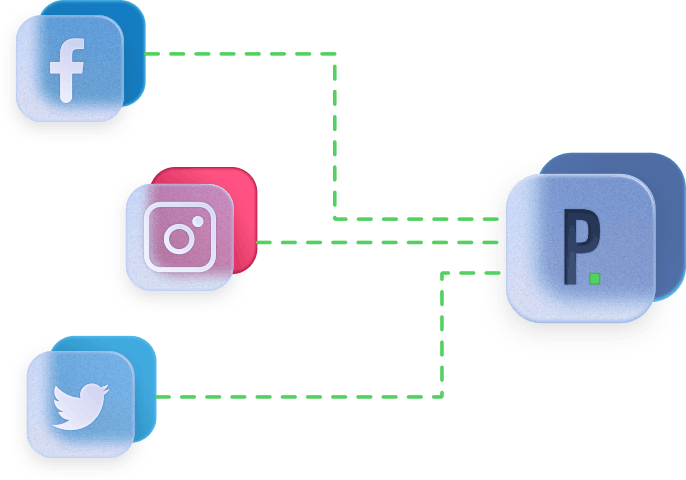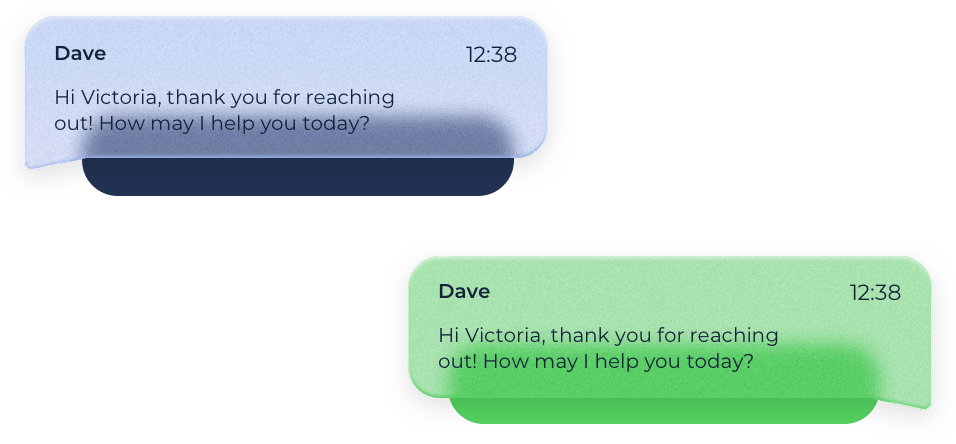Om iemand blij te maken, moet je eerst zelf blij zijn. Blije mensen maken het verschil. Met een glimlach of een tevreden KCC medewerker, bereik je betere resultaten. Wij stellen je in staat om efficiënter te werken en hier blije eindgebruikers voor terug te krijgen. We gaan verder dan technologie. Technologie is voor ons een middel. KCC medewerkers die met plezier klanten blij maken? Ons doel.
Wij leveren maatwerk op een persoonlijke manier
Specialist.
Sinds onze oprichting in 2009 leveren we, als specialist in alle moderne non-voice kanalen, een positieve bijdrage aan de klantvriendelijkheid van onze klanten.
Op maat.
We kunnen groot denken en durven het klein te maken. Ons team is flexibel, integer en streeft altijd simpelweg naar de beste oplossing voor jou.
Direct resultaat.
We bieden direct, aantoonbaar resultaat in de vorm van hogere NPS, verhoging van medewerkerstevredenheid, verbetering in afhandeltijd en een lagere FTE inzet.
Je bent in goed gezelschap
Applicaties die impact maken
Wij begrijpen dat klantcontact niet altijd even makkelijk is, maar wij durven te beloven dat onze applicaties zorgen voor blije KCC medewerkers én blije klanten. We stroomlijnen alle interacties en maken klantcontact efficiënter. Wachttijden verkorten, responstijden verbeteren en jouw klanten meer flexibiliteit en gemak bieden, dat is waar wij voor staan. Zo creëren we samen een positieve ervaring voor klanten, zorgen we voor betere klantenbinding en een positieve merkherkenning. Wacht niet langer en ontdek nu hoe onze applicaties jullie klantcontact naar een hoger niveau kunnen tillen.

Parley Inbox
Parley Inbox heeft zich bewezen als het meest efficiënte afhandelplatform voor klantvragen over alle moderne non-voice kanalen. Als pionier én specialist in modern klantcontact, hebben wij een forse voorsprong en realiseer jij, met onze gebruiksvriendelijke Unified Inbox, een hogere medewerkertevredenheid en maximale (kosten)efficiëntie. Wat resulteert in een lagere AHT, hogere NPS en hogere first time fix.

Parley Messaging
Parley Messaging is met haar features een innovatieve en unieke chat applicatie, speciaal ontwikkeld voor KCC’s (Klant Contact Centers), voor de meest efficiënte communicatie met jouw klanten. Het heeft de laagdrempeligheid, historie, a-synchroniciteit en notificatie van WhatsApp. En tegelijk de mogelijkheden van livechat. De technologie wordt rechtstreeks in Parley Inbox of in een bestaande afhandelplatform geïntegreerd.
Voor wie?
Kies simpelweg voor plezier in klantcontact. Dan bereik je het beste resultaat. We maken het graag simpel. En de impact groot. Jij blij.
Effectieve technologie met eenvoudige integratie
Persoonlijke benadering in het bouwen van merkreputatie met klantcontact
IJzersterke resultaten door blije mensen



